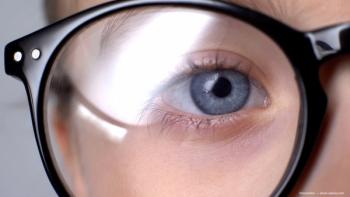
- Ophthalmology Times: October 2023
- Volume 48
- Issue 10
Study offering new hope for medical presbyopia correction
BRIO-1 clinical trial sowing optimism as a potential therapeutic option.
Results of the BRIO-I study, the first of 2 phase 3 clinical trials of Brimochol PF (carbachol/brimonidine tartrate; Visus Therapeutics), a topical, fixed-dose combination for the treatment of presbyopia, have recently been released. They give us reason for great optimism about this drug in particular and the future of medical presbyopia correction more generally.
For a combination therapy to be approved in the United States, the contribution of each of the individual components must be demonstrated. This requires that the combination product must be shown to be statistically superior to each component administered alone. This has been a high hurdle as, until now, no phase 3 study has shown this in presbyopia.
In the study, a single dose of Brimochol PF was compared with each of the individual monotherapies (carbachol 2.75% and brimonidine tartrate 0.1%) in a crossover design in which every subject received all 3 drops after a minimum 3-day washout. This design helped ensure that patient characteristics such as baseline pupil size, ocular surface issues, and residual accommodation were consistent across all 3 treatment arms.
The drops were tested in a broad population of 182 subjects that included phakic or pseudophakic emmetropes (±0.5 diopter [D]) aged 45 to 80 who had visual acuity at baseline of 20/50 or worse at near and at least 20/25 at distance. After baseline testing, the drops were instilled and visual acuity was tested at multiple time points out to 10 hours.
Near vision efficacy
At 1, 2, 4, and 6 hours, Brimochol PF was superior to both carbachol and brimonidine monotherapies, with up to 51% of subjects meeting the preset FDA end point of a ≥ 15-letter gain from predose baseline without a ≥ 5-letter loss. Although this is a standard FDA end point for efficacy in ophthalmic drug clinical trials, it may not be the most clinically relevant end point for presbyopes who seek to be spectacle free. For clinicians, a more useful efficacy end point may be the proportion of patients who can see 20/40 or better at near. In BRIO-I, that rate was 85% at hour 1, 65% at hour 6, and still 49% at hour 10 (Figure 1).
We knew that carbachol is a potent miotic, so good results on near visual acuity were expected with carbachol alone. The most intriguing result, though, was the clinical benefit from the addition of brimonidine in enhancing the magnitude and durability of the combination therapy over carbachol. This result is believed to be due to brimonidine’s effect on aqueous dynamics, resulting in higher carbachol levels in the iris.1
As clinicians who care about the ocular surface, we are very encouraged to see that Brimochol PF was so effective even while being preservative free. Benzalkonium chloride (BAK), the most common topical preservative, is toxic to the ocular surface—and it is this very toxicity that can actually facilitate drug penetration. Knowing that Brimochol PF was able to penetrate effectively without BAK is good news for patients.
Pupil effects
Brimochol PF was superior to both monotherapies in pupil diameter reduction at all time points. Peak pupil reduction occurred at 1 to 2 hours, with the pupil diameter gradually returning to normal over 10 hours. The mean pupil diameter ranged from 2.0 to 3.5 mm, a target that maximizes improvements in near and distance visual acuity across a range of lighting conditions.2
The temporary and fully reversible nature of the miosis is key to its favorable clinical profile. Although we want to see a long duration of effect with a single daily dose, extended constriction of the pupil would be undesirable, potentially leading to frequent night vision problems, loss of distance vision, dimming, and even posterior synechiae. The gradual offset of miosis with Brimochol PF over the day balances near vision improvement with minimizing nighttime vision risks. Something to be aware of in the clinic is that patients who already have very small pupils may not benefit greatly from a miotic agent for presbyopia correction.
Safety and tolerability
There were no serious adverse events related to any of the treatments in the BRIO-I study, including no cases of retinal detachment. The most commonly experienced symptoms in the Brimochol PF arm were eye irritation (14% of patients) and headache (9%). And since this is a once-a-day drop, patients avoid any extra tolerability issues that may come with drops that require twice-a-day dosing to get the same durability. It’s also notable that there were no reports of conjunctival hyperemia, perhaps owing to the known eye-whitening effect of brimonidine. None of the patients dropped out of the study because of problems with tolerability. In future studies, it will be interesting to see whether even these relatively low rates of headache dissipate over time, as we have seen with other topical presbyopia drops.
No loss of mesopic binocular distance vision was observed with any of the 3 formulations (Figure 2). Maintenance of distance vision is part of the FDA criteria for all presbyopia-correcting drops and is a really important safety measure for these drops. An overly powerful miotic effect that resulted in very small pupils would improve near vision but may happen at the expense of distance acuity—and we did not see that at all in this trial. In fact, there was a statistically significant 1.4- to 2-letter improvement in distance visual acuity at multiple time points over carbachol and brimonidine lasting for 10 hours. Remember that these subjects had good distance vision to begin with, so the amount of improvement is limited but suggests that patients with mild refractive error may benefit at distance and near.
Satisfaction
In the real world, patients’ impression of presbyopia-correcting drops and desire to use them will be the most important factor in their success—and in doctors’ willingness to prescribe them. In BRIO-I, subjects rated the effectiveness of the drops for reading up close very highly (7 out of 10) and said they would be willing to use the drops nearly every day (7 out of 10, where 10 = every day). Additionally, subjects said the duration of the drop was “just right”—not too long or too short. This is very interesting because we know that “just right” can mean different things to different people. Some people want improved near vision that lasts a few hours for social outings, while others want a drop that lasts throughout an 8-hour workday. Brimochol PF appears to have the versatility to suit a wide range of patients’ needs.
Outlook for the future
A second phase 3 study of Brimochol PF, BRIO-II, is already underway and slated to be completed in 2024. That study compares Brimochol PF with a vehicle control with dosing up to 12 months.
Several other miotic drops are also moving forward in the regulatory approval process with very different profiles. No single drop will be perfect for everyone, just as there is no single contact lens brand or multifocal intraocular lens that works for every patient, so having more choices to offer will be very helpful.
In our opinion, while miotics are not for everyone, many presbyopes can benefit from medical management of presbyopia. Some patients will want a drop that works well for an hour or 2, while others will want something that works all day. We encourage colleagues to carefully consider the profiles of these drops as more details emerge about the next generation of presbyopia-correcting drops.
Elizabeth Yeu, MD
Yeu is an assistant professor of Ophthalmology at Eastern Virginia Medical School and in private practice at Virginia Eye Consultants in Norfolk, Virginia. Yeu is a consultant for Visus.
Cecelia Koetting, OD, FAAO, DipABO
Koetting is a clinical instructor in the Department of Ophthalmology at the University of Colorado School of Medicine in Aurora, Colorado. Contact her at [email protected] is a consultant for Visus.
References:
1. Verhoeven RS, Burke J, Schiffman R. Nonclini- cal pharmacokinetics and pharmacodynamics of Brimochol, a combination product for the treatment of presbyopia. Invest Ophthalmol Vis Sci 2022;63(7):1819 – F0435.
2. Xu R, Thibos L, Bradley A. Effect of Target Lumi- nance on Optimum Pupil Diameter for Presbyopic Eyes. Optom Vis Sci. 2016 Nov;93(11):1409-1419. DOI: 10.1097/OPX.0000000000000963. PMID: 27560851.
Articles in this issue
about 2 years ago
Are your patients suffering in silence with dry eye disease?about 2 years ago
Geographic atrophy is taking center stageabout 2 years ago
Editorial: Education can change livesabout 2 years ago
Shape shifting: A punctal plug that fits securely into the punctumabout 2 years ago
Pearls for integrating dry eye disease management into your practiceabout 2 years ago
Early treatment of GVHD in the ophthalmology setting is criticalNewsletter
Don’t miss out—get Ophthalmology Times updates on the latest clinical advancements and expert interviews, straight to your inbox.



















































.png)


